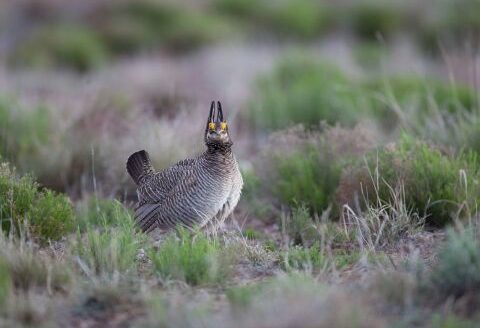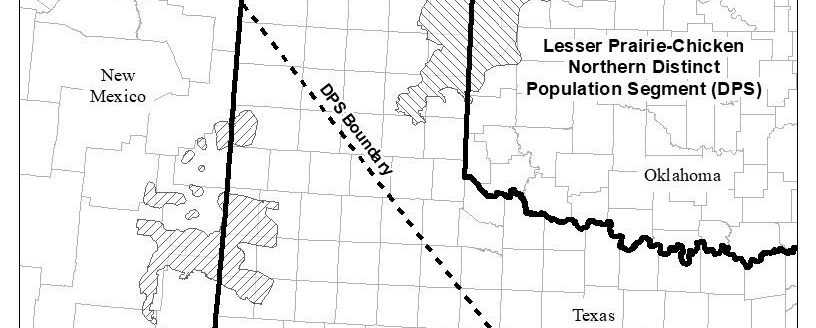Trump aims to end automatic protections for some species
The Trump administration July 19 proposed ending automatic protections for threatened animals and plants and limiting habitat safeguards meant to shield recovering species from harm.
Administration officials said the new rules would advance conservation by simplifying and improving how the Endangered Species Act is used.
“These rules will be very protective,” said Deputy Secretary of the Interior David Bernhardt, adding changes would reduce the “conflict and uncertainty” associated with many protected species.
President Donald Trump and Secretary of the Interior Ryan Zinke have been strong advocates for oil and gas drilling and other types of development, frequently criticizing environmental policies they say hinder economic activity. Zinke has sought to portray himself as a conservationist in the vein of President Teddy Roosevelt who will protect the nation’s natural resources.
Several proposed changes relate to section 4 of the ESA, which deals with procedures for listing species, recovery and designating critical habitat (areas essential to support the conservation of a species).
First, the U.S. Fish and Wildlife Service and National Oceanic Atmospheric Administration Fisheries propose to revise the procedures for designating critical habitat by reinstating the requirement that they will first evaluate areas currently occupied by the species before considering unoccupied areas. Second, the agencies propose to clarify when they may determine unoccupied areas are essential to the conservation of the species.
“The ESA defines a threatened species as one that is likely to become in danger of extinction within the ‘foreseeable future,’” a FWS release said. “For the first time, the agencies are proposing an interpretation of ‘foreseeable future’ to make it clear that it extends only as far as they can reasonably determine that both the future threats and the species’ responses to those threats are probable.”
The FWS statement also said the agencies are also clarifying that decisions to delist a species are made using the same standard as decisions to list species. In both cases, that standard is whether a species meets the established ESA definition of an endangered species or threatened species.
“The Trump administration is dedicated to being a good neighbor and being a better partner with the communities in which we operate. One thing we heard over and over again was that ESA implementation was not consistent and often times very confusing to navigate. We are proposing these improvements to produce the best conservation results for the species while reducing the regulatory burden on the American people,” said U.S. Fish and Wildlife Service Principal Deputy Director Greg Sheehan said in a statement.
Like it, loathe it
The proposals drew immediate commendation from farm groups and condemnation from Democrats and some wildlife advocates.
American Farm Bureau Federation President Zippy Duvall said in a statement, “The American Farm Bureau Federation is pleased to see the White House is prioritizing regulatory improvements to the Endangered Species Act. We look forward to reviewing the proposals in greater detail with our members and providing constructive comments to the docket.
“On their face, the revisions are in line with farmers’ and ranchers’ calls for rules that are clear, encourage voluntary conservation work, increase local involvement and chart a path for real recovery and delisting of species. We applaud the Trump administration’s regulatory reform efforts and this long-overdue change to the ESA.”
Ethan Lane, executive director of the Public Lands Council and the National Cattlemen’s Beef Association Federal Lands, said, “We are pleased to see the administration taking such a serious and measured approach to modernizing the regulatory side of the Endangered Species Act. While we are still reviewing the details of these proposed rules, they are focused on some of the most impactful areas of current ESA implementation and could consequently provide tremendous relief to ranchers once finalized. We look forward to working with Secretary Zinke and his team on this effort.”
Critics said the moves would speed extinctions in the name of furthering its anti-environment agenda. Species currently under consideration for protections are considered especially at risk, including the North American wolverine and the monarch butterfly, they said.
“It essentially turns every listing of a species into a negotiation,” said Noah Greenwald with the Center for Biological Diversity. “They could decide that building in a species’ habitat or logging in trees where birds nest doesn’t constitute harm.”
A number of conflicts have arisen in the decades since the 1973 passage of the Endangered Species Act, ranging from disruptions to logging to protect spotted owls in the Pacific Northwest, to attacks on livestock that have accompanied the restoration of gray wolves in the Rocky Mountains and upper Midwest.
Some species including gray wolves and grizzly retained protection for years after meeting their original recovery goals, often due to court orders resulting from environmentalists’ lawsuits.
Collin O’Mara, president of the National Wildlife Federation, welcomed the potential for the changes to spur greater collaboration between landowners, government officials and conservationists—even as he cautioned against ending automatic protections for threatened species.
“This is not all good or all bad,” O’Mara said.
O’Mara said crafting case by case species management plans is an appropriate alternative to the blanket protections now given automatically to threatened and endangered species. Until those plans are completed, he said, broad protections against harming plants and animals should stay in place.
“A good start”
The law shields more than 700 animals and almost 1,000 plants in the U.S. Hundreds more are under consideration for protections.
Fewer than 100 species have been taken off the threatened and endangered lists, either because they were deemed recovered or, in at least 10 cases, went extinct.
The administration’s proposals follow longstanding criticism of the Endangered Species Act by business groups and some members of Congress. Republican lawmakers are pushing legislation to enact broad changes to the law, saying it hinders economic activities while doing little to restore species.
One of the chief architects of that effort, Senate Environment and Public Works Committee Chairman John Barrasso, R-WY, said the administration’s proposals were “a good start” but indicated more work was needed.
“The administration is limited by an existing law that needs to be updated,” Barrasso said. “The changes I have proposed will empower states, promote the recovery of species and allow local economies to thrive.”
Meanwhile, a group of House lawmakers introduced a package of bills July 19 to overhaul the ESA, including provisions to make it easier for the government to remove species from the endangered or threatened lists and preventing organizations from suing to try to get species protected.
The bills could also incentivize voluntary conservation efforts, let states enter “cooperative agreements” for recovery and prioritize data from local communities in making scientific decisions about conservation.
“We can all agree that we want to make sure that we have the best interests of the endangered species on all of our minds. But we want to make sure that the science is helping us out, that we’re engaging all the assets, from private, public and government sectors,” said Rep. Paul Gosar, R-AZ, chairman of the Congressional Western Caucus, at a news conference, unveiling the new proposals.
Gosar and Western GOP lawmakers sat alongside representatives of industry groups that support the package, like oil and natural gas.
“This is a set of bills that we think will actually start that discussion of having some modernization and to better equip us for the future,” Gosar said.
Matthew Brown of The Associated Press contributed to this report.
Larry Dreiling can be reached at 785-628-1117 or [email protected].



